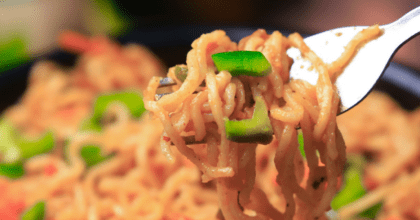Half of Americans think gluten-free diets are a fad while 25% eat gluten-free foods
Despite skepticism of gluten-free diets, Americans are consuming gluten-free foods more than ever before. New research from Mintel reveals that nearly half (47 percent) of consumers agree that gluten-free diets are a fad, compared to 31 percent in 2013. What’s more, one quarter (25 percent) of consumers report that they consume gluten-free foods, a 67 percent increase from 2013.
A testament to innovation in the category, Mintel research shows that some 90 percent of gluten-free food consumers are satisfied with available gluten-free food options, and 35 percent agree that the quality of gluten-free foods is higher than before. So much so that some Americans are willing to pay a premium for gluten-free options, including 26 percent of consumers who agree that gluten-free foods are worth their added cost.
When looking at the reasons why consumers gravitate toward gluten-free foods – aside from a gluten intolerance or sensitivity – Mintel research shows that consumers perceive foods with any free-from claim to be both healthier and less processed. Likewise, growth of gluten-free foods is driven by health concerns, with 37 percent of consumers reporting that they eat gluten-free foods because it’s better for their overall health and 16 percent doing so because “gluten is bad for you.” Another 11 percent of consumers eat gluten-free foods because a healthcare professional suggested they eliminate gluten from their diet.
Despite linking gluten-free foods to health, consumers who eat these foods for weight loss dropped from 25 percent to 19 percent 2014-2015, suggesting that consumers are more likely to view gluten-free products as a contributing factor to their overall well-being than simply as a weight loss tool. This is evidenced by the 23 percent of consumers who report that they only incorporate gluten-free foods into their diet some of the time.
Sales of gluten-free foods have experienced growth of 136% from 2013-2015
Skeptical attitudes toward gluten-free diets have done nothing to hinder sales of gluten-free foods, as the category has experienced growth of 136 percent from 2013-2015, reaching estimated sales of $11.6 billion in 2015. With over one quarter (27 percent) of gluten-free food consumers looking for gluten-free labels on food packaging, gluten-free food sales exploded from 2.8 percent of total food sales in 2013 to 6.5 percent in 2015.
However, trust in gluten-free product claims has slightly decreased, with 45 percent of consumers trusting that products bearing a gluten-free claim are actually gluten-free, down from 48 percent in 2014. Another 45 percent of consumers agree manufacturers should not label products as gluten-free if they never contained gluten in the first place.
“While some consumers view the gluten-free diet as a fad and are looking for improved nutrition and ingredients in gluten-free foods, consumption continues to trend upward. Large and small manufacturers are entering the gluten-free category, increasing the availability, quality and variety of gluten-free foods while Americans display interest in incorporating these foods into their diet,” said Amanda Topper, Senior Food Analyst at Mintel. “However, since trust toward manufacturers’ labeling of gluten-free foods has slightly waned, they should consider providing messaging about the steps taken to ensure their products are gluten-free to reassure consumers. Americans have come to expect brands and products to be transparent and trust that the items they purchase are as advertised.”
Gluten-free foods create competition in restaurants
When dining out, nearly three in 10 (28 percent) consumers with celiac disease are less strict about eating gluten-free foods compared to eating at home. Restaurants are expanding their gluten-free options to target these consumers: gluten-free as an ingredient claim on menus grew 127 percent from Q2 2012-Q2 2015 and is now the top nutritional ingredient claim.
“While finding gluten-free foods away from home can prove difficult for gluten-free food consumers, there has been growth in gluten-free restaurant options as gluten-free diets have become more popular. In the past, it may not have been feasible for celiacs and gluten-free food consumers overall to find these foods at restaurants. Moving forward, there should be more expansive gluten-free menu offerings as the foodservice industry competes with retail for the rising number of gluten-free Americans,” concluded Topper.
Press copies of the Gluten-free Foods US 2015 report and interviews with Amanda Topper, Senior Food Analyst, are available on request from the press office.
For the latest in consumer and industry news, top trends and market perspectives, stay tuned to Mintel News featuring commentary from Mintel’s team of global category analysts.
-
Mintel StoreGet smart fast with our exclusive market research reports, delivering the latest data, innovation, trends and strategic recommendations....View reports
-
Mintel LeapMintel Leap is a revolutionary new AI-powered platform that will transform your research process....Book a demo







































